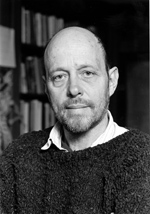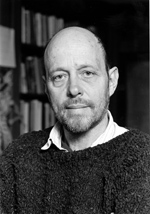RANGOON — It has no place on official maps, but parts of Myanmar fall within a geographical zone described by some Southeast Asia scholars as Zomia. Stretching across a massive area of Asia, Zomia is considered to be the biggest area in the world that still remains beyond the grasp of traditional nation-states or governments. In Myanmar, this includes the peripheral territories inhabited by ethnic groups that have fought armed conflicts against the central government for decades.
American political scientist James C. Scott sparked debate in his anthropological study “The Art of Not Being Governed: An Anarchist History of Upland Southeast Asia” (2009), which contends that the highland people of Zomia were not left behind, but rather consciously chose to avoid the modern state. The award-winning author and Yale University professor spoke with The Irrawaddy’s Samantha Michaels after a recent visit to Myanmar, also known as Burma.
Question: You argue that hill tribes in Southeast Asia have chosen to live beyond the reach of state-making projects such as taxation, forced labor and war. Can you briefly explain this theory in the context of Myanmar’s history?
Answer: Many ethnic groups that came to northern Burma over the last 2,000 years fled up the Yangtze River watershed to move away from the expansive Chinese state, and some from Thai and Burmese states, which were all slave-taking states. The hills were not strongly populated 500 or 600 years ago, but they became more populated as the big states expanded and people moved away from slave raids.
Q: How would you describe the state-making strategies of President U Thein Sein’s administration, compared with those of the former junta? Has the reform process strengthened the Myanmar state?
A: The Burmese state is still incredibly weak. If you think of infrastructural power—the ability to collect taxes, to know the land-holding situation, to have complete lists of population and property holdings, to have a police presence everywhere—you’re not talking about the Burmese government. You could argue—I’m not sure I want to, but at least it’s worth considering—that the government is less coherent now than it might have been 10 years ago. It has “all thumbs and no fingers,” meaning it has crude military power but not the fine-tuning power of a successful administrative state.
My guess is that the president and his closest cooperatives have bought room to make small compromises with the rest of the military, given the military’s interest in controlling the economy, by allowing regional military commanders to more or less have a free hand in seizing land and enterprises. They’ve turned a blind eye toward corruption and land seizures in the regions. It’s the condition, I suppose, of the little democratic opening we have now in Burma, but it’s a kind of feudalism, it makes the government more fragmented. I think if the government were to seriously address the land seizures, it would find itself with a military revolt.
Q: Myanmar’s census this year—the country’s first census in over 30 years—was highly controversial, especially among ethnic minorities who accused the government of incorrectly classifying them. What was your take on the situation?
A: The census in 1931 also identified ethnic groups, but on the basis of the “language spoken to the cradle,” that is to say, the

language the mother spoke to her children in the cradle. The director of that census, a good little bureaucrat, did his job, but at the end he said it was crazy because people in Burma change their language as often as we change our clothes. Of course that’s not literally true, but the fact is that people in the hills speak two, three, four, sometimes five languages, and each language is useful in a particular situation. They have a portfolio of potential identities they can display. The point is that a census gives false solidity to identities that are extremely flexible. Decisions about classifying ethnic groups are political.
Q: Would it make sense for Myanmar to conduct a census without classifying ethnic groups?
A: It would be politically impossible in the sense that any kind of federalism that would be created in Burma would take account of some conception of cultural groups. [It would] require administrative units coinciding roughly with major cultural divisions. I’m not against the census, I might add, I just want to point out how political it is.… It’s a [state] capacity. It’s not morally bad or good, it depends how it’s used.
Q: On your recent visit to Myanmar, you gave talks at the Yangon School of Political Science and Pansodan Gallery. What else did you do?
A: I went to Pathein and spent three weeks working with a tutor every day, all day, on Burmese language skills. Then I went to the literary festival in Mandalay—Daw Aung San Suu Kyi and a whole series of poets were there. I also spent a couple days in the deep delta. I’m deeply interested in the Ayeyarwady River—I’m sort of a canoeist here.
Q: Are you working on any projects in Myanmar now?
A: There was something called the Bulletin of Burma Research that was started in 1905 by colonial civil servants. Anthropologists, linguists and historians met every month and read papers to each other, a number of Burmese became involved later, and it became the central place for Burmese studies locally. It was closed by the military government in 1979. Now we would like to restart an academic journal that would be controversial and open to amateurs as well as professional scholars. We [Mr. Scott and U Tun Myint, a Myanmar political scientist in the United States] have the money to begin this.
Q: How are your Myanmar language studies coming along?
A: I’ve been studying for about six or seven years but only a month and a half every year. I’ve learned a lot of different languages in my life, and Burmese is the hardest. I think you shouldn’t study a country unless you’re willing to learn the language, because you learn a lot by understanding how the language works, why certain turns of phrases are important. It’s a mark of cultural respect. I have trouble following closely when a lot of Burmese people speak at the same time—I get the drift but it’s difficult—and that’s the kind of thing that you only develop by working within the country and having the language in your ear all the time.
This interview first appeared in the July 2014 issue of The Irrawaddy magazine.
















